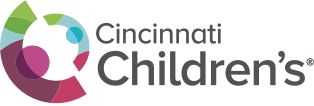Advancing Pediatric Brain Injury Rehabilitation
The Division or Rehabilitation Medicine at Cincinnati Children's is dedicated to improving recovery outcomes for children and families impacted by traumatic and acquired brain injuries.
Through clinical and translational research, we focus on optimizing health, function and well-being after these injuries by combining cutting-edge scientific approaches, technological innovation and clinical expertise. Our goal is to translate complex research findings into practical, family-centered solutions that enhance recovery and resilience for pediatric patients.
Our Research
We are transforming care for pediatric brain injury patients by integrating diverse scientific and methodological approaches to uncover new insights into recovery processes and intervention opportunities. This includes exploring genetics, social-environmental influences, medication interventions, artificial intelligence (AI), machine learning (ML) and other innovative methods. Our research teams:
- Uncover the mechanisms behind secondary brain injuries, such as cellular stress and immune responses and identify novel interventional targets
- Develop and implement evidence-based, accessible solutions that address the unique needs of children and young adults recovering from traumatic brain injuries (TBI)
- Explore population-specific resilience to brain injuries and tailor interventions based on individual genetics, socio-environmental contexts and emerging technological tools
We adopt a patient-centered approach that empowers families to participate actively in recovery planning, ensuring treatments are optimized for every child’s circumstances.
Key Areas of Interest
Our multidisciplinary investigations span from acute injuries to long-term effects, incorporating advanced methodologies like genetics research, AI and ML to refine understanding and treatment. Areas of study include:
- Traumatic optic neuropathy (TON)—studying optic nerve and retinal damage from TBI, including axonal degeneration, neuroinflammation and related stress cellular responses
- Immune system dynamics—investigating how the immune response affects recovery following optic nerve injury and contributes to long-term outcomes
- Brain metabolism—exploring chronic metabolic changes after TBI and how these shifts are linked to cognitive and functional recovery
- Genetic underpinnings of recovery trajectories—identifying how genetic variations influence recovery, resilience and treatment responses
- The role of AI and ML in TBI recovery research—leveraging ML models to predict recovery outcomes, optimize intervention pathways and identify unique patient needs through advanced data analytics
Our research extends into the broader environmental, therapeutic and lifestyle factors that affect recovery, considering how factors like social context, medical interventions and lifestyle choices can shape long-term outcomes.
Collaborations in Rehabilitation Research
Our research extends well beyond traditional TBI pathways, leveraging cross-disciplinary collaborations across Cincinnati Children’s institutes to address diverse rehabilitation needs. Our integrated research projects include:
- Developing and trialing interventions to improve behavioral and developmental outcomes of children born very preterm with the Perinatal Institute
- Investigating interventions for adolescents with epilepsy in partnership with Behavioral Medicine and Clinical Psychology and the Comprehensive Epilepsy Center
- Enhancing recovery strategies for brain tumor survivors in collaboration with the Cancer and Blood Diseases Institute
- Exploring ML- and AI-driven predictive analytics for brain injury recovery
These initiatives represent a holistic approach to recovery, using diverse scientific and technological expertise to identify novel solutions for pediatric rehabilitation challenges.
Technology-Based Interventions for Families
The division leads the development of innovative technology-based interventions for children and families, including the Teen Online Problem-Solving Program (TOPS). This web-based solution helps adolescents with TBI manage executive function and behavioral challenges.
TOPS has been identified as a best practice and is currently being implemented at 15 sites across the United States and Canada. It helps adolescents and their families improve coping strategies and recovery outcomes following brain injuries.
Our exploration of AI, ML and other technological approaches allows us to build on interventions like TOPS by incorporating predictive analytics and personalized intervention strategies.
Through our commitment to interdisciplinary research, technological innovation and family-centered care, we are redefining how pediatric brain injuries are understood, managed and treated—improving recovery outcomes and quality of life for children and their families.




